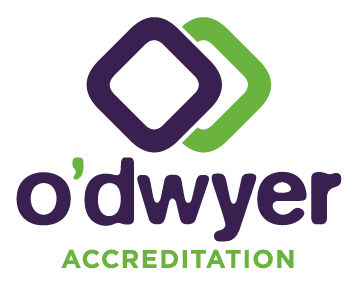The art of tidying up your SOPs
Today, more than ever, having a set of standard operating procedures (SOPs) in your lab is crucial for any organisation.
But when was the last time you sorted through and updated your laboratory’s standard operating procedures? Or maybe you’ve got great procedures hiding in long-winded documents that would be better converted into flow charts or diagrams and displayed around your workplace?
If you’re ready to finally turn those complex multi-page procedures into visually clear and useful working documents, then read on.
Here are our top tips on how to write great SOPs for your lab and declutter your documents – Marie Kondo-style.
Firstly, what is an SOP?
An SOP is the instructions describing the steps and activities of a process or procedure.
In other words, any of the routine steps your staff carry out. The how-to’s, contingency plans, and checklists. You may know them as procedures, methods, or instructions.
You may think these critical documents are just there to cover your organisation when it comes to compliance, output, and OHS. In fact, your SOPs streamline and thus improve how individuals and departments carry out their tasks, minimise errors, identify opportunities, and communicate with each other.
Best of all, when SOPs show how the procedure is relevant – such as linking it to a quality outcome – your staff will be more autonomously engaged in continual improvement.
Why decluttering your paperwork helps you find procedural ‘gold’ to write great SOPs for your laboratory
The famous decluttering expert, Marie Kondo, teaches us that having a tidy home free of unwanted paraphernalia brings more joy.
And the same is true in business. Having concise, relevant, visible SOPs will bring more peace and productivity to your workplace.
Yet, many labs have SOPs written years ago or by previous managers with out-of-date or excessive detail. Or they were written by a consultant who didn’t understand what SOPs your laboratory needs.
That’s why most SOPs are kept as ‘official’ documents for accreditation purposes. They’re not prominently displayed in the workplace to prompt quality procedures. Or, if displayed, the information is poorly communicated, meaning the key point is lost. The reality is, quality systems are crucial to a successful business model. You can’t afford to build up a stack of procedural paperwork ‘junk’ and lose the benefits that clear SOPs offer.
Remember, an SOP aims to ensure service quality and staff safety, minimise risk and conflict, and boost efficiency.
To do this, they must be:
- Kept up-to-date by being regularly reviewed and updated
- Goal-oriented, clearly conveying why a certain procedure is necessary
- Visible in your workplace
- Addressed to a specific team or individuals
Organisations and accreditation requirements are frequently adapting. So ‘tidy’ SOPs are vital when systemising and documenting your procedures.
How to decide what stays and what goes by considering the value of each SOP
We’re not suggesting that procedures may or may not ‘spark joy’ in the workplace. Though Marie Kondo’s recommendation of ‘choosing what to keep, not what to get rid of’ is a great systematic approach for tidying up your SOPs.
But before you jump in and start updating those SOPs you know are out of date, take some time to plan for lasting improvements.
For each SOP, use these questions to guide whether it’s time to make changes or let them go altogether:
- Is it on high rotation with front-line staff?
- Do staff value it? (ask if they need and appreciate the content)
- Is the process highly operator-dependent?
- Does it offer a step-by-step process or just one aspect of a process (such as safety)
- Does it make a complex process clear and easy to follow?
- Does it contain key data that must be used in day-to-day testing?
- Would bringing the procedure up-to-date be relatively simple and quick?
Your answers will help you prioritise how you spend your time. Then the next step is mapping out a structure.
Why planning a structure for your SOPs takes the hard work out of decluttering
The easiest way to make your SOPs look slick (think: handy visual charts) and work effectively is to plan out a structure based on your key processes.
It’ll simplify your SOP decluttering. Plus, a clear structure gives you an easy way to decide WHERE, WHEN, and for WHOM each piece of information is needed
Try this straightforward approach to creating your structure:
- Draft flowcharts of all your main processes, Then link ONE procedure to each step. If there are many SOPs, you might have more than one process at work, or you may need to combine some.
- Repeat this process in each department or section if you’re part of a large laboratory
- Arrange detailed instructions and methods linked to the relevant SOPs
How to identify ‘problem’ SOPs and what to do with them
An SOP that’s a total mess
Is it out of sequence, has an excruciating level of detail, or seems to have been written by multiple authors over time? Start again and borrow lines from it as needed to fill in details.
A ‘must-have’ procedure in accreditation requirements, but it’s rarely referred to
Try to deal with these in a high-level operations/quality manual.
Rarely used, but important technical procedures
Write with plenty of detail. Then clearly reference them in other procedures at the point that the operator will decide they need to use the process/method.
An SOP describing safety precautions or environmental measures only
Safety and environmental requirements for specific processes shouldn’t exist as stand-alone documents. Include the information on how to comply in the process document (SOP) at the relevant point. Or, even better, use official signage and provide the safety equipment at the point where the process is conducted!
Long wordy descriptions of times, requirements, decisions, and options
See if you can extract data into tables or charts for displaying in the laboratory.
Long, wordy SOPs with too much detail for well-established processes
Remove obvious, redundant, or repetitious information that can distract staff from the important points they may need to look up. Ask your team how much information they need.
A memo announcing a process change is issued as an SOP
Find the SOP it belongs in and include it at the logical point in that process.
Generic ISO9001 SOPs that are far too long
When these SOPs are combined with all the test methods, forms, templates, and quality manuals, they can add up to an overwhelming number of pages. Get rid of the generic ISO9001 SOPs, replace them with a few lines in the quality manual and add instructions to the forms.
Ready to start writing great lab standard operating procedures?
Imagine transforming your procedures and manuals from a huge pile of unrelated documents to a simple set of SOPs. It’ll be far easier to update them when processes change and new requirements are introduced.
Plus, instead of getting bogged down with out-of-date instructions, your internal audit program can focus on quality outcomes.
Need some help?
Thanks to our combined experience with NATA and various fields of testing, we’ve helped many laboratories replace the proverbial ‘300-hundred page tome’ with 30 pages of relevant information their staff find useful!
Contact us today if you want us to help you do the same.



